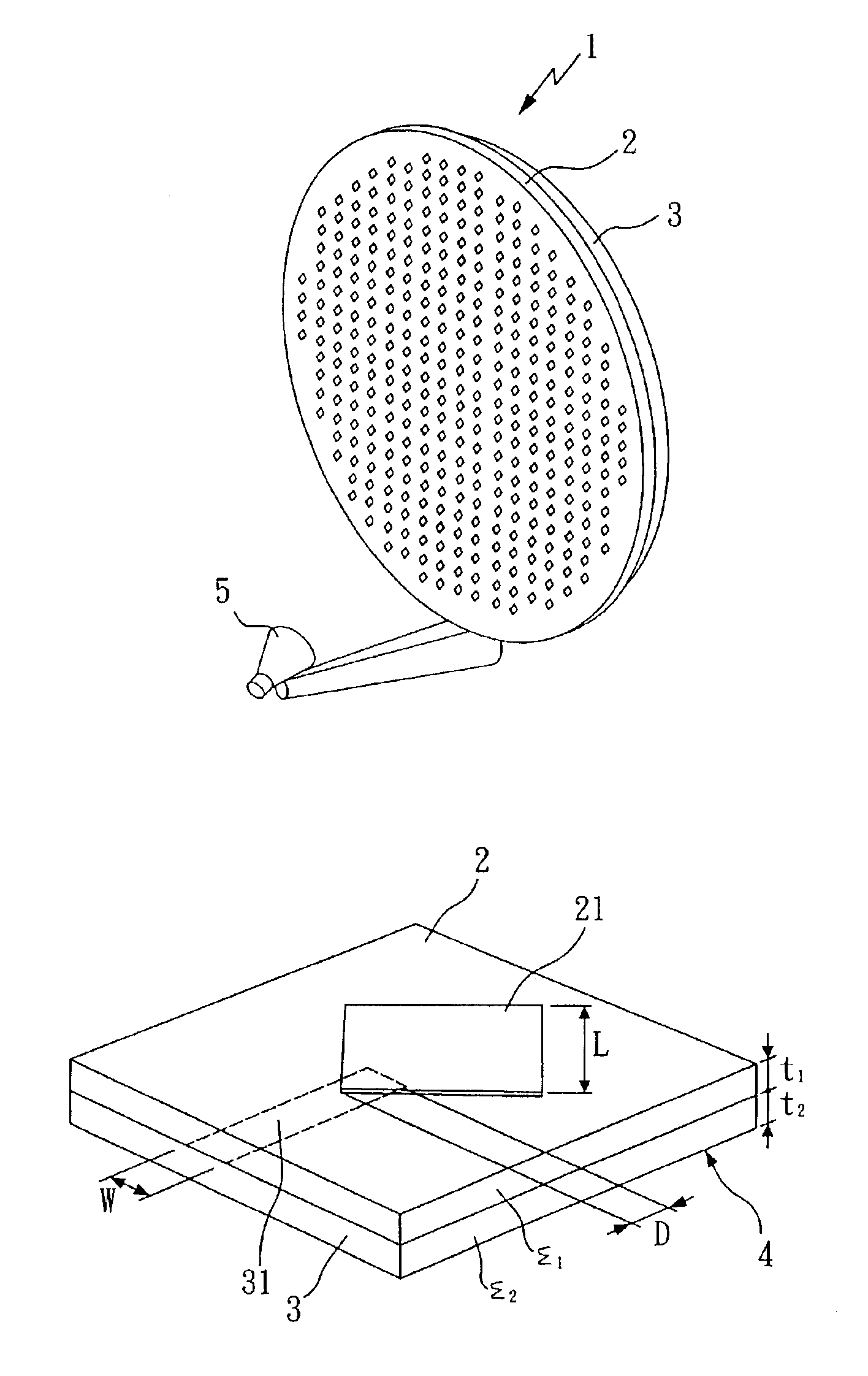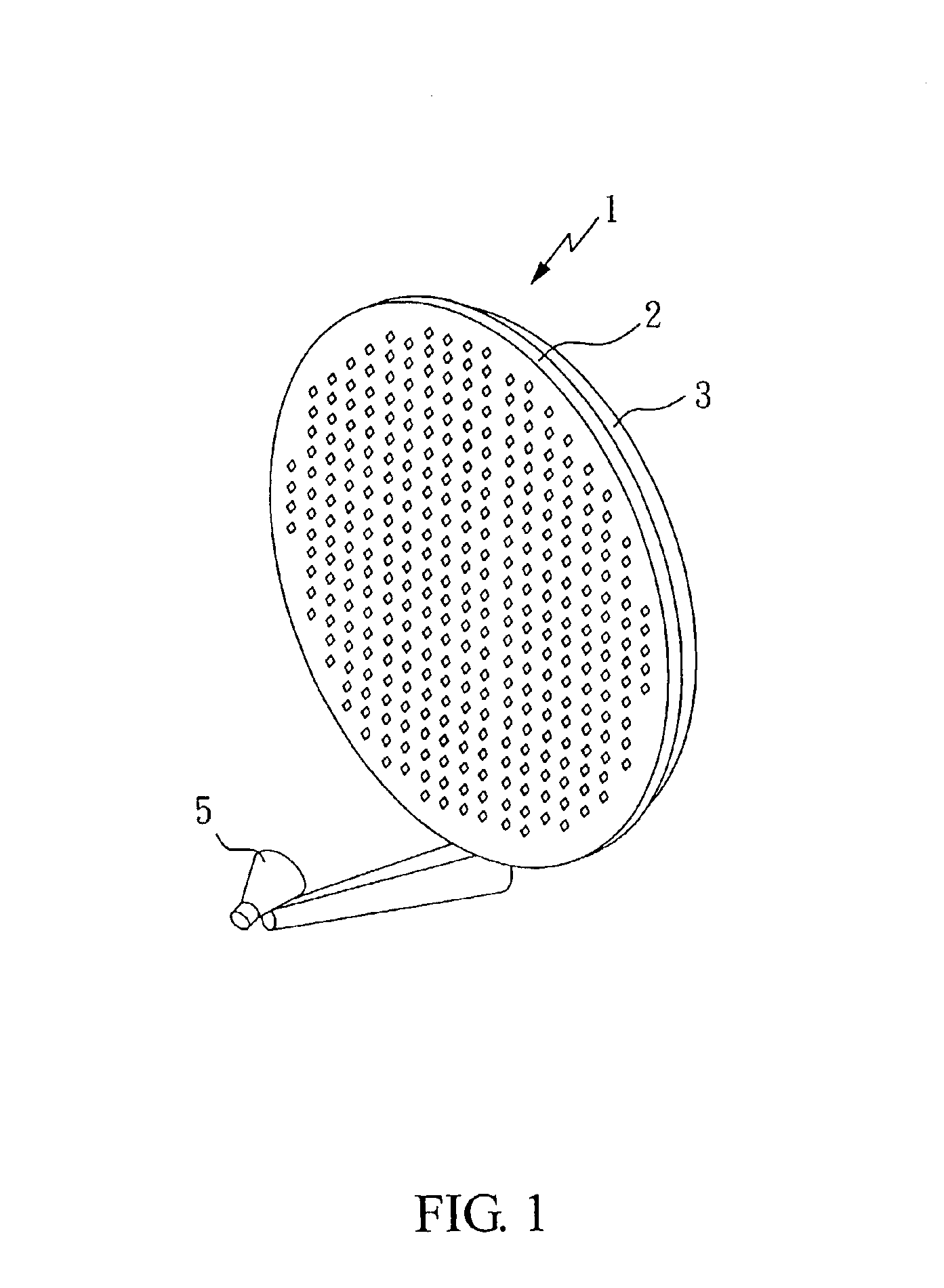Bilayer microstrip reflector antenna
a microstrip reflector and antenna technology, applied in the field of antennas, can solve the problems of narrow gain-bandwidth and reduce the efficiency of antennas, and achieve the effects of reducing radiation level, improving antenna gain-bandwidth, and eliminating interferen
- Summary
- Abstract
- Description
- Claims
- Application Information
AI Technical Summary
Benefits of technology
Problems solved by technology
Method used
Image
Examples
Embodiment Construction
Referring to FIG. 1, a circular bilayer microstrip reflector antenna 1 is shown comprised of a first dielectric layer 2, a second dielectric layer 3 abutting against the first dielectric layer 2, and a horn antenna 5. As illustrated in FIGS. 2a and 2b, the aforesaid first dielectric layer 2 comprises a plurality of antenna units 21 on one face and a plurality of phase-delay circuit units 31 on the other face. The phase-delay circuit units 31 are sandwiched between the first dielectric layer 2 and the second dielectric layer 3. Referring to FIG. 3, the first dielectric layer 2 has a thickness t1 and a dielectric constant ε1. The second dielectric layer 3 that abuts to the first electric layer 2, has a thickness t2 and a dielectric constant ε2. According to this embodiment, the antenna units 21 in the first dielectric layer 2 are rhombic, having a side length L; the phase-delay circuit units 31 are rectangular, having a width W. The phase-delay circuit units 31 each overlapping the co...
PUM
 Login to View More
Login to View More Abstract
Description
Claims
Application Information
 Login to View More
Login to View More - R&D
- Intellectual Property
- Life Sciences
- Materials
- Tech Scout
- Unparalleled Data Quality
- Higher Quality Content
- 60% Fewer Hallucinations
Browse by: Latest US Patents, China's latest patents, Technical Efficacy Thesaurus, Application Domain, Technology Topic, Popular Technical Reports.
© 2025 PatSnap. All rights reserved.Legal|Privacy policy|Modern Slavery Act Transparency Statement|Sitemap|About US| Contact US: help@patsnap.com



